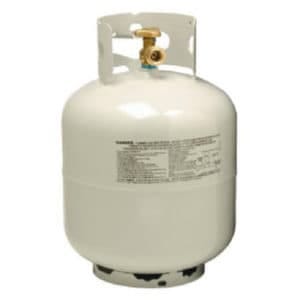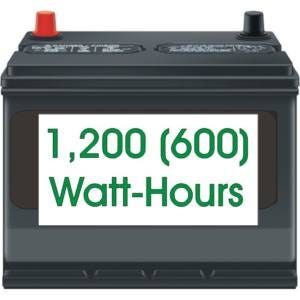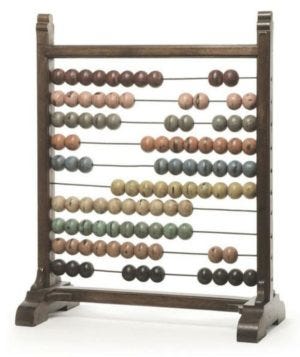Propane vs Battery Energy
Just the basics on how many batteries are needed to replace a tank of propane…
Dear Mike,
I’m curious just how much battery power is needed to equal a 20-lb. tank of propane? For example, my 3-way fridge can run for a few weeks on propane mode, but when I try to power it from my batteries and inverter, it won’t even last a day before the battery is dead. Can you explain why this happens? — JP
Dear JP
Ah, yes, it’s the energy density thing. And while modern lithium batteries can store a lot of power, they pale by comparison with a tank of propane. Let’s compare by first calculating how many kWh (Kilowatt Hours) of energy is in a gallon of propane.
Do the numbers
You can easily look up that the available energy in 1 gallon of propane is equal to 27 kWh (Kilowatt Hours) of electricity. Now, this is assuming a 100% conversion efficiency, but we’ll ignore that variable for now.
A 20-lb. tank of propane is right around 4.8 gallons, since each gallon of propane weighs 4.1 lbs. Because they never fill these tanks all the way to the top, let’s assume a maximum of 4.5 gallons in a 20-lb. tank. To find the total energy we just do the multiplication and find that 4.5 gallons x 27 kWh = 121.5 kWh in a 20-lb. tank of propane.
What about battery energy?
This is even easier to calculate. We already know how many amp-hrs of storage each battery has. And you also should know that lead-acid batteries (flooded or AGM) should only be discharged down to 50% SoC (State of Charge) or battery life will suffer and you’ll be buying a new battery (or batteries) next season.
Let’s use a common 100 Amp-hr (or Ah) battery as an example. If it’s an AGM battery, you should only use 50 amp-hrs of its capacity. So 100 Ah x 12 volts = 1,200 watt-hrs (Wh) of energy. But since it shouldn’t be discharged below 50%, that’s 600 Wh of available energy. Here’s what the equation looks like: 100 Ah x 12 volts x 50% = 600 Wh.
What about lithium batteries?
It’s the same calculation of 100 Ah x 12 Volts x 100% = 1,200 Wh of available energy. As I’ve written many times, a 100 amp-hr Lithium battery has twice the available storage of a lead-acid battery. Plus, they charge faster and weigh a lot less than a lead-acid battery. So a win-win if you have the budget for them.
Final calculations
We already calculated there’s around 120 kWh of energy in a 20-lb. tank of propane, which is around 120,000 Watt-hrs for a single 100 Amp-hr AGM or flooded lead-acid battery.
If we divide propane energy by battery energy, then you need 120,000 Ah / 600 Ah = 200 lead-acid batteries of 100 Ah capacity each to equal the energy in a single 20-lb. tank of propane. That’s 200 lead-acid batteries to replace a single 20 lb tank of propane!
Similarly, for Lithium batteries, we see that 120,000 Ah / 1,200 Ah = 100 lithium batteries of 100 amp-hrs each to equal one 20-lb. tank of propane energy. That’s 100 Lithium batteries to replace a single 20 lb tank of propane!
Wow, that’s a while lotta energy!
While it will be a long time before there’s a battery no bigger than a propane tank that can store 120,000 Wh of energy, all is not lost. I’m currently studying fuel cells that do a direct conversion of propane to electricity. They come in up to 1,500 watt modules that can be stacked in parallel.
If these fuel cells work out as planned, you could have the best of both worlds. Since their conversion efficiency is close to 90% compared to the 30% conversion efficiency of a generator running on propane, you could power an RV with an air conditioner for nearly a week on a single 20 lb tank of propane with a fuel cell. Stand by, as I’m working on getting a demo fuel cell to experiment with.
OK, everyone. Remember that electricity is a useful and powerful force, so we all need to pay attention to safety precautions while using it.
Let’s play safe out there…. Mike









Really interesting Mike :-) can’t wait for more info about your experiments.
Practical application…I recently returned from a solo 14-day boondocking trip. I started with 18.3 lbs of propane. I used 12 lbs running my fridge, 10 hot water showers and boiling 1, sometimes 2, cups for coffee daily. Given those numbers I coulda taken more showers! If my wife was with me those usage figures could effectively double.